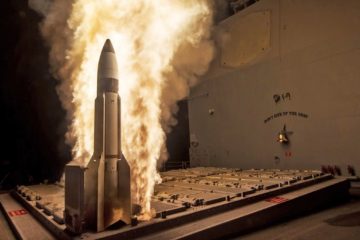Story by Lt.Cmdr. Joseph Keiley / US Navy / CTF 70
The operations included the flagship of Carrier Strike Group (CSG) 5, USS Ronald Reagan, Ticonderoga-class guided-missile cruiser USS Chancellorsville (DDG 62), Arleigh Burke-class guided-missile destroyer USS Benfold (DDG 65), the JMSDF destroyer JS Asahi (DD 119), and the Republic of Korea Navy destroyer ROKS Munmu The Great (DDH 976). The ships operated with a U.S. submarine to enhance interoperability in anti-submarine warfare.
“Coordination with our allies is critical to strengthening our ability to respond to any challenge in the region. We all share common maritime strategy interests and challenges, and are truly stronger when we sail and operate together, “said Rear Adm. Michael Donnelly, commander, CSG 5. “The ROK Navy and JMSDF are maritime forces we always benefit from working closely with, and we look forward to more opportunities for operations at sea that deepen our relationship and capabilities.”
The U.S. – Japan – Republic of Korea tri-lateral operations provided an opportunity for each country to work together, increase interoperability and focus on common maritime goals.
“Through this exercise, I was able to improve our tactical capabilities and strengthen cooperation with the U.S. Navy and the ROK Navy,” said Cmdr. IKEDA Tadashi, commanding officer, JS Asahi. “The three countries, the United States, Japan, and the ROK, share common strategic interests, and close cooperation on opportunities similar to this exercise is in great demand to address security challenges, including the various problems posed by North Korea.
Liaison officers from each country were able to observe the exercise from each surface vessel participating.
“This ASW exercise allowed us to enhance our combined ASW capabilities against enemy submarine threats” said Capt. Cho Choong Ho, commander, ROK Navy BATRON11. “We will continue such realistic high intensity exercises so that we can react decisively and overwhelmingly against any form of provocations.”
The U.S. Navy maintains a presence in the Indo-Pacific region to help preserve peace and security and further our partnerships with friends and allies.
The Ronald Reagan Carrier Strike Group is deployed to the U.S. 7th Fleet area of operations in support of a free and open Indo-Pacific. U.S. 7th Fleet conducts forward-deployed naval operations in support of U.S. national interests in the Indo-Pacific area of operations. As the U.S. Navy’s largest forward-deployed fleet, 7th Fleet interacts with 35 other maritime nations to build partnerships that foster maritime security, promote stability, and prevent conflict.







